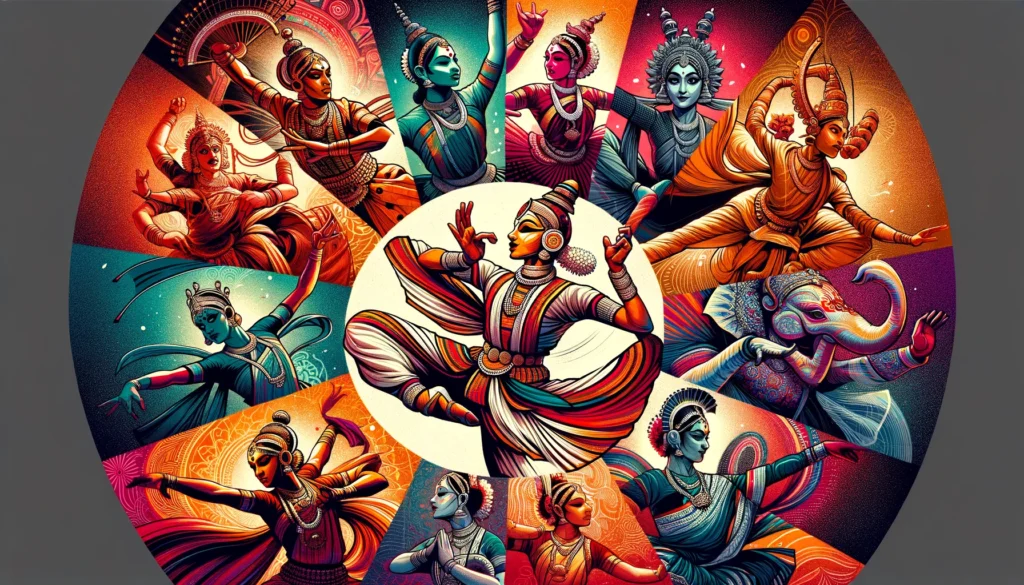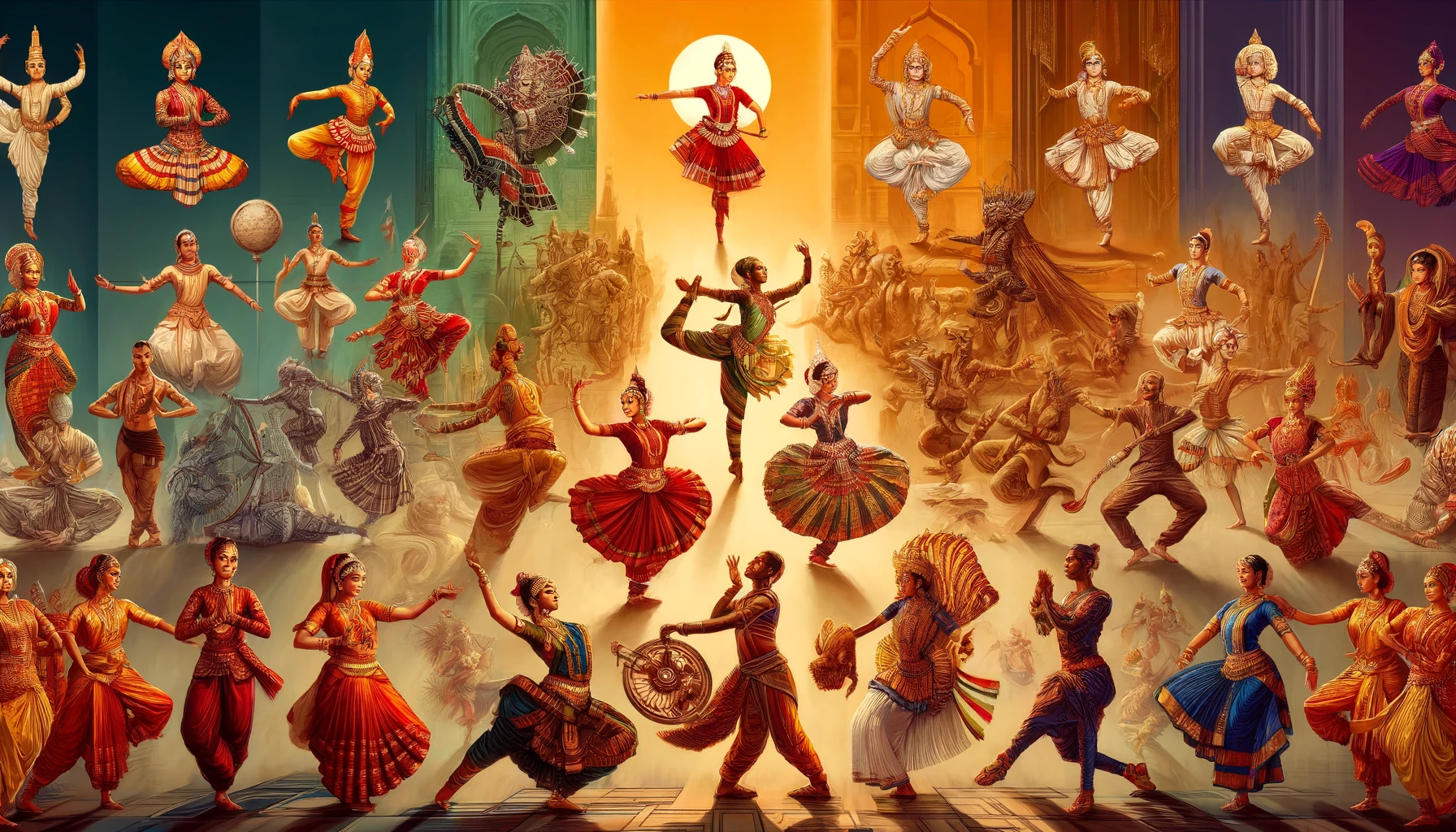Dance stands as a cornerstone of art and culture, transcending beyond mere physical movements to become a profound medium of artistic expression. It encapsulates emotions, narratives, and cultural traditions, fostering enhanced communication within societies. As an artistic form, dance breaks barriers, develops the senses, and merging music, rhythm, and movement into an extraordinary performance that conveys intellectual, emotional, and spiritual messages.

The Diverse Tapestry of Dance Across States
The rich cultural heritage of India is mirrored in its diverse dance forms, each with a unique history and style that contribute to the nation’s vibrant art scene. Here’s a glimpse into some of the classical dances that define the cultural landscape of various states:
- Kathak: Originating from Uttar Pradesh, Kathak is celebrated for its rapid spins, intricate footwork, and the art of storytelling through expressive gestures. Esteemed Kathak exponents include Bharti Gupta, Birju Maharaj, and Durga Das, who have played pivotal roles in popularizing this classical form.
- Bharatanatyam: Hailing from Tamil Nadu, Bharatanatyam is among the oldest classical dance traditions in India. Known for its precision in footwork, expressive rhythms, and graceful movements, this dance form has been brought to the global stage by artists like Bala Saraswati, C.V. Chandrasekhar, and Yamini Krishnamurti.
- Odissi: With its roots in Odisha, Odissi stands out for its expressive facial gestures and meticulous footwork. Renowned Odissi dancers such as Debaprasad Das and Priyambada Mohanty have significantly contributed to its fame.
- Kuchipudi: Originating from Andhra Pradesh, Kuchipudi combines graceful movements with expressive storytelling. Dancers like Josyula Seetharamaiah and Vempati Chinna Satyam have been instrumental in promoting Kuchipudi across the globe.
- Kathakali: Kathakali, from Kerala, is notable for its striking makeup, costumes, and facial expressions, offering a visually captivating storytelling experience. Icons such as Mrinalini Sarabhai and K.C. Panikkar have been key figures in Kathakali’s prominence.
- Manipuri: From the northeastern state of Manipur, this classical form is famed for its elaborate costumes and exceptional footwork, often portraying tales of Lord Krishna and Radha. Dancers like Nirmala Mehta and Savita Mehta have been celebrated for their performances.
- Mohiniyattam: Kerala’s Mohiniyattam is known for its subtle expressions and storytelling gestures, characterized by white and off-white sarees with golden borders. Prominent dancers include Protima Devi and Pankaj Das, who have enriched this dance form with their artistry.

Celebrating Diversity through Dance
In addition to these classical forms, India’s dance culture is further enriched by folk dances such as Bihu, Chhau, Garba, and Bhangra, each embodying the spirit and traditions of their respective regions.
Dance, in its myriad forms, continues to be a vital expression of India’s art and cultural heritage, weaving together the diverse threads of tradition, emotion, and storytelling into a vibrant tapestry that resonates with people across the globe. By fostering an understanding and appreciation of these dance forms, we not only celebrate their beauty and artistry but also ensure their preservation and continuation for generations to come.




Wonderful blog. Very informative also. Able to know about Indian culture in depth. Interested to know more about this culture. Please keep it up.
Very informative…….. excellent writing skill